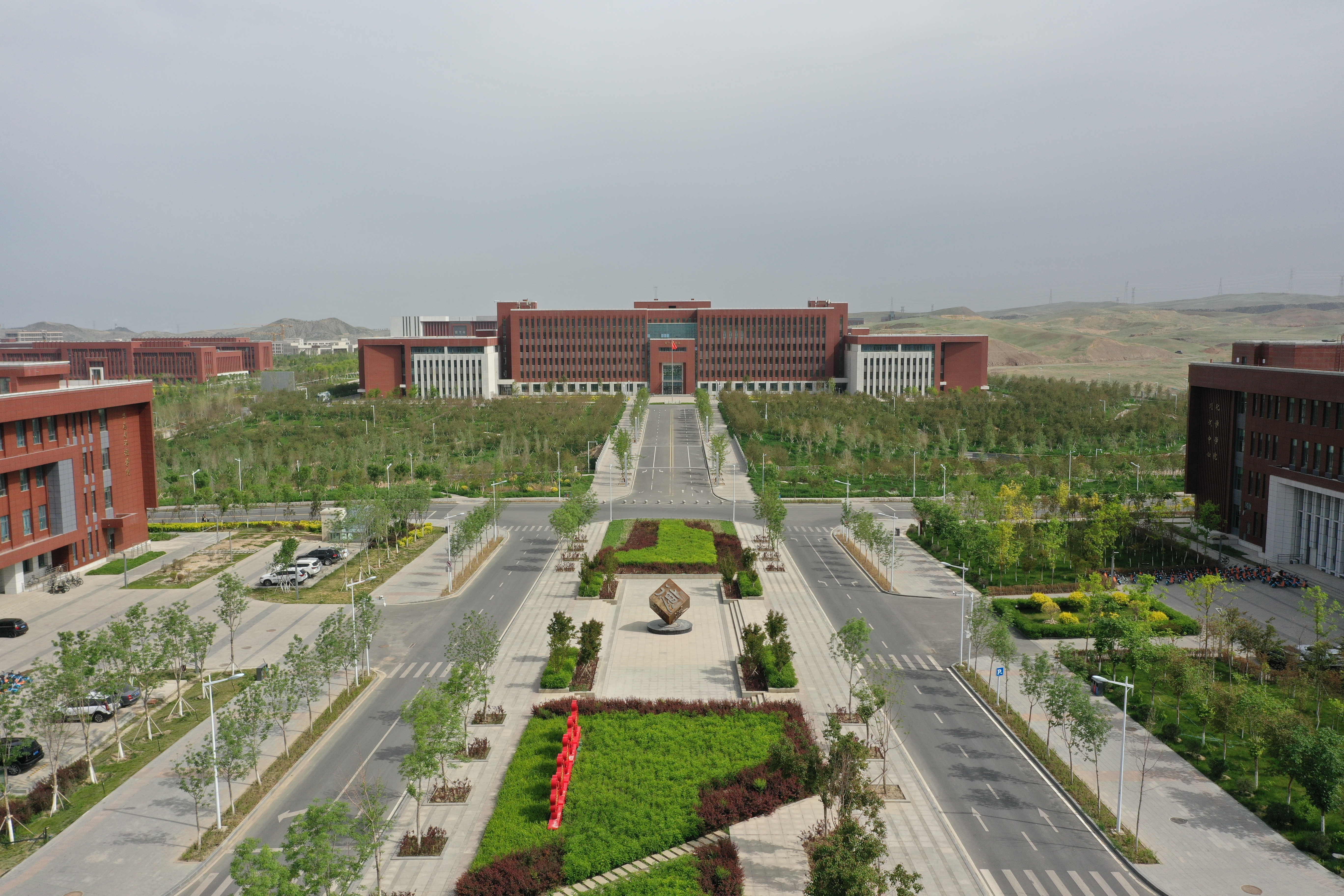谢亚红
Optimization of perovskite/carbon interface performance using N-doped coal-based graphene quantum dots and its mechanism analysis
Qixu Hu a , Xiaoyu Yang a , Ying Qi a , Peng Wei a , Jian Cheng b , Yahong Xie a,*
A State Key Laboratory of Chemistry and Utilization of Carbon Based Energy Resources; School of Chemical Engineering and Technology, Xinjiang University, Urumqi 830017, Xinjiang, China
b Department of Materials & Chemical Engineering, Hanyang University, Seoul 04763, South Korea
Optimizing the interfacial properties between perovskite and carbon electrodes has always been an important way to improve the photoelectric conversion efficiency (PCE) of carbon-based perovskite solar cells (C-PSCs) and facilitate their commercialization. In this paper, nitrogen-doped graphene quantum dots (N-GQDs) with fluorescent properties were successfully prepared using inexpensive coal as raw material by a facile and environmentally friendly chemical reagent oxidation. The results show that the electron-rich pyridinic nitrogen in N-GQDs can act as Lewis bases to form coordination bonds with uncoordinated lead ions by sharing electron pairs, thereby reducing the defect density and nonradiative recombination of photo-generated electron-hole, and extending lifetime of charge carriers. In addition,due to the passivation of N-GQDs, the hysteresis effect of the device is significantly reduced and the long-term stability is also improved. By optimizing the concentration, the PCE of C-PSCs achieved a maximum of 14.31%, which was improved by 20.25% compared with 11.90% of the pristine C-PSCs. This work provides a facile, environmentally friendly and efficient strategy for improving the overall performance of C-PSCs using inexpensive coal-based N-GQDs.
掺N煤基石墨烯量子点优化钙钛矿/碳界面性能及其机理分析
胡启旭a,杨晓玉a,祈英a,魏鹏a,程建b,谢亚红a,*
a碳基能源化学与利用国家重点实验室;新疆大学化学工程与技术学院,新疆乌鲁木齐830017
b汉阳大学材料与化学工程系,韩国首尔04763
优化钙钛矿与碳电极之间的界面性能一直是提高碳基钙钛矿太阳能电池光电转换效率(PCE)和促进其商业化的重要途径。本文以廉价煤为原料,通过简便环保的化学氧化成功制备了具有荧光性能的氮掺杂石墨烯量子点(N-GQDs)。结果表明,N-GQDs中富电子的吡啶氮可以作为路易斯碱,通过共享电子对与非配位铅离子形成配位键,从而降低光生电子空穴的缺陷密度和非辐射复合,延长载流子寿命。此外,由于N-GQDs的钝化,器件的迟滞效应显著降低,长期稳定性也得到了提高。经浓度优化后,C-PSCs的PCE最高可达14.31%,比原始C-PSCs的11.90%提高了20.25%。这项工作为利用廉价的煤基N-GQDs提高碳基钙钛矿太阳能电池的整体性能提供了一种简单、环保和有效的策略。
论文链接:https://www.sciencedirect.com/science/article/pii/S2095495622006775
Enhanced efficiency and stability of carbon-based CsPbI2Br perovskite solar cells by introducing metal organic framework-derived Fe3O4@NC interfacial layer
Xiaoyu Yang a , Ying Qi a , Peng Wei a , Qixu Hu a , Jian Cheng b , Yahong Xie a,*
a State Key Laboratory of Chemistry and Utilization of Carbon Based Energy Resources, School of Chemical Engineering and Technology, Xinjiang University, Urumqi, 830017, PR China
b Department of Materials & Chemical Engineering, Hanyang University, Seoul, 04763, South Korea
Carbon-based CsPbI2Br perovskite solar cells (C-PSCs) have the advantages of low cost and stable performance, but the poor contact and energy mismatch between the perovskite layer and the carbon electrode lead to low power conversion efficiency (PCE). In this work, uniform spindle-shaped Fe3O4@NC composites have prepared by calcining Fe-based metal organic framework (Fe-MOF) NH2-MIL-88B(Fe), which has synthesized by solvothermal reaction using 2-aminoterephthalic acid as nitrogen and carbon sources. Using Fe3O4@NC composite and UV-Ozone treated Fe3O4@NC composite (Fe3O4@NC UVO) as the interfacial layer between the perovskite layer and the carbon electrode, the devices with a structure of FTO/SnO2/CsPbI2Br/interfacial layer/Carbon exhibit a maximum PCE of 12.25%, which is about 19.28% higher than that of the pristine device. The improved optoelectronic performance is mainly attributed to more matched energy level, denser interface contact, better carrier separation performance and better conductivity. After 19 days of storage at room temperature and ambient humidity, Fe3O4@NC UVO device has retained 87% of the initial PCE. This work provides a simple and effective strategy to improve the PCE and stability of carbon-based CsPbI2Br PSCs with Fe-MOFs-derived carbon materials.
引入金属有机骨架衍生Fe3O4@NC界面层,提高碳基CsPbI2Br钙钛矿太阳能电池的效率和稳定性
杨晓玉a,祈英a,魏鹏a,胡启旭a,程建b,谢亚红a,*
a新疆大学化学工程与技术学院碳基能源化学与利用国家重点实验室,乌鲁木齐830017
b汉阳大学材料与化学工程系,韩国首尔04763
碳基CsPbI2Br钙钛矿太阳能电池(C-PSCs)具有成本低、性能稳定的优点,但钙钛矿层与碳电极之间的接触不良和能量失配导致功率转换效率(PCE)较低。本文以2-氨基对苯二甲酸为氮源和碳源,通过溶剂热反应合成了Fe基金属有机骨架(Fe- MOF) NH2-MIL-88B(Fe),通过煅烧制备了均匀的纺锤形Fe3O4@NC复合材料。采用Fe3O4@NC复合材料和uv -臭氧处理过的Fe3O4@NC复合材料(Fe3O4@NC UVO)作为钙钛矿层与碳电极之间的界面层,FTO/SnO2/CsPbI2Br/界面层/碳结构的器件的最大PCE为12.25%,比原始器件提高了约19.28%。光电性能的提高主要归功于更匹配的能级、更密集的界面接触、更好的载流子分离性能和更好的导电性。在室温和环境湿度下储存19天后,Fe3O4@NC UVO器件保留了87%的初始PCE。该工作为提高fe - mofs来源碳材料CsPbI2Br PSCs的PCE和稳定性提供了一种简单有效的策略。
论文链接:https://www.sciencedirect.com/science/article/pii/S0378775323003026
